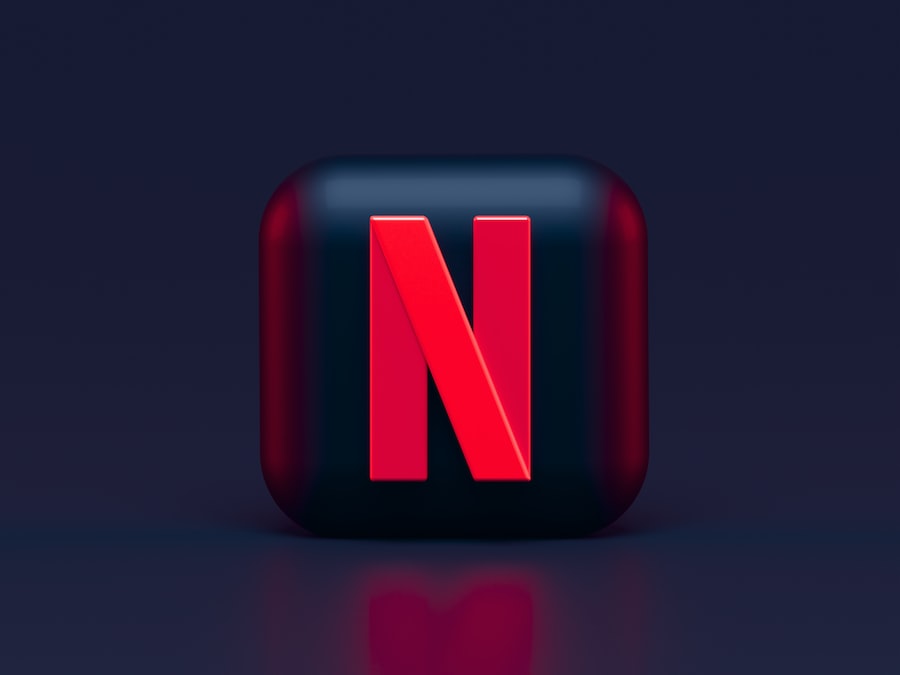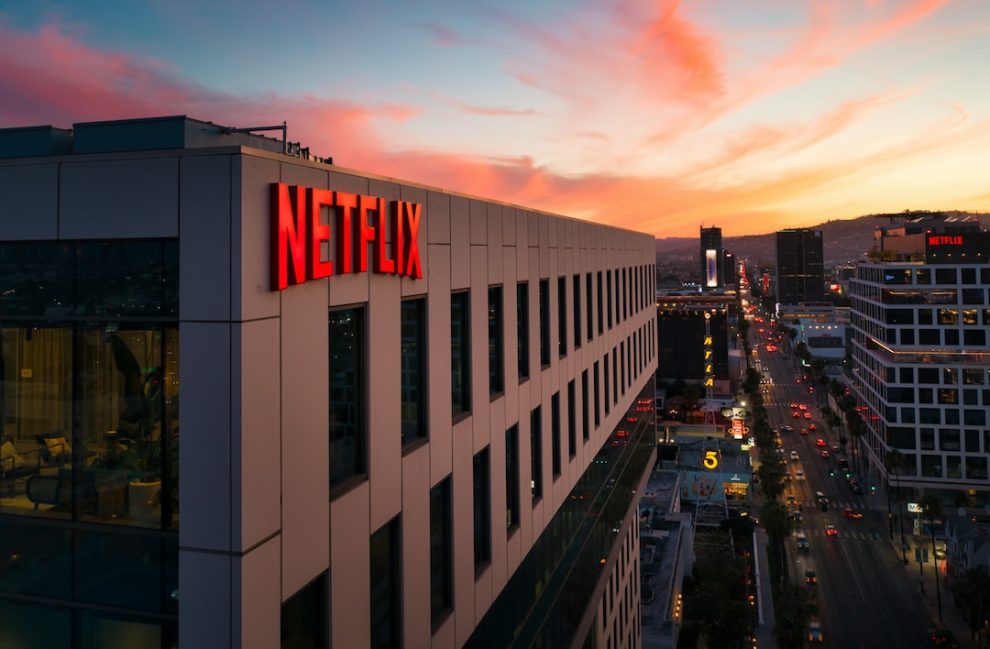In recent years, Netflix has become a dominant player in the television industry, revolutionizing the way we consume TV shows and movies. With its on-demand streaming service and vast library of content, Netflix has changed the way we watch television, giving rise to the phenomenon of binge-watching. This article will explore the rise of Netflix and the binge-watching phenomenon, as well as the impact it has had on traditional television networks and the future of the TV industry.
The Rise of Netflix and the Binge-Watching Phenomenon
Netflix started as a DVD rental service in 1997, but it wasn’t until 2007 that it introduced its streaming service, which allowed subscribers to instantly watch TV shows and movies online. This move marked a turning point for Netflix, as it shifted its focus from physical media to digital streaming. Over the years, Netflix has invested heavily in acquiring content from various studios and networks, building an extensive library that includes both licensed content and original programming.
Binge-watching refers to the act of watching multiple episodes of a TV show in one sitting. This behavior has become increasingly popular with the rise of streaming services like Netflix, which release entire seasons of shows at once. Binge-watching has become a cultural phenomenon, with people eagerly consuming entire seasons or even series in a matter of days or weeks. This behavior is fueled by the convenience and accessibility of streaming services, as well as the addictive nature of many TV shows.
How Netflix Has Changed the Way We Consume Television
Netflix has disrupted the traditional TV viewing experience by offering on-demand streaming, allowing viewers to watch their favorite shows whenever and wherever they want. Gone are the days of appointment viewing, where viewers had to tune in at a specific time to catch their favorite shows. With Netflix, viewers have complete control over their viewing experience, being able to pause, rewind, or fast-forward through episodes as they please.
On-demand streaming has changed the way we watch TV by eliminating the need for commercials and providing a more personalized viewing experience. Viewers can now binge-watch entire seasons of shows without interruption, immersing themselves in the storylines and characters. This has led to a shift in how TV shows are produced, with many creators and networks now designing shows specifically for binge-watching, crafting narratives that are meant to be consumed in one sitting.
From Appointment Viewing to On-Demand: The Evolution of TV
The way we consume television has evolved significantly over the years. In the early days of television, viewers had limited options and were at the mercy of network schedules. Appointment viewing was the norm, with families gathering around the TV at specific times to watch their favorite shows. The introduction of VCRs in the 1980s allowed viewers to record shows and watch them at a later time, but it still required planning and effort.
The rise of cable and satellite TV in the 1990s brought about more channels and programming options, but viewers were still tied to network schedules. It wasn’t until the advent of digital video recorders (DVRs) in the early 2000s that viewers gained more control over their TV viewing. DVRs allowed viewers to record shows and watch them at their convenience, but they still had to plan ahead and set recordings.
Netflix’s on-demand streaming service changed everything. With its vast library of content available at any time, viewers no longer had to rely on network schedules or plan ahead to watch their favorite shows. They could simply log in to Netflix and start watching whatever they wanted, whenever they wanted. This shift from appointment viewing to on-demand streaming has revolutionized the way we consume television.
The Psychology of Binge-Watching: Why We Can’t Stop Watching
Binge-watching has become a widespread behavior, with many people finding it difficult to stop watching once they start. There are several psychological reasons behind this phenomenon. One reason is the concept of “flow,” which refers to a state of complete immersion and focus on an activity. When we binge-watch, we enter a state of flow, becoming fully absorbed in the storylines and characters of the shows we’re watching.
Another reason why we can’t stop binge-watching is the cliffhanger effect. Many TV shows are designed to end each episode with a cliffhanger, leaving viewers wanting more and eager to find out what happens next. This creates a sense of anticipation and compels viewers to keep watching. Additionally, binge-watching provides a sense of instant gratification, as viewers can watch multiple episodes back-to-back without having to wait for the next installment.
Netflix has capitalized on these psychological factors by releasing entire seasons of shows at once, allowing viewers to indulge in their binge-watching habits. The addictive nature of many TV shows, combined with the convenience and accessibility of streaming services, has made binge-watching a popular pastime for many people.
The Impact of Netflix on Traditional Television Networks

Netflix’s rise to dominance has had a significant impact on traditional television networks. As more and more viewers turn to streaming services like Netflix for their entertainment needs, traditional networks have seen a decline in viewership and advertising revenue. This has forced them to adapt and find new ways to compete in the digital age.
One way traditional networks have responded to Netflix’s disruption is by launching their own streaming services. Networks like HBO, CBS, and NBC have all launched their own streaming platforms in an effort to retain viewers and generate additional revenue. These platforms offer both current and past seasons of shows, as well as exclusive content not available on traditional T
Another response from traditional networks has been an increased focus on original programming. In order to compete with Netflix’s extensive library of content, networks have invested in creating their own original shows. This has led to a golden age of television, with high-quality programming being produced by both traditional networks and streaming services.
The Role of Original Content in Netflix’s Success
Netflix’s original content has played a crucial role in its success and has contributed to the changing landscape of the TV industry. By investing in original programming, Netflix has been able to differentiate itself from other streaming services and attract subscribers. Shows like “Stranger Things,” “House of Cards,” and “Orange is the New Black” have become cultural phenomena, drawing in millions of viewers and generating buzz on social media.
Netflix’s strategy of releasing entire seasons at once has also contributed to the success of its original content. By allowing viewers to binge-watch entire seasons, Netflix creates a sense of event television, with viewers eagerly anticipating the release of new seasons and discussing them online. This has helped to build a loyal fan base and generate buzz around its shows.
The success of Netflix’s original content has also changed the TV industry by challenging the dominance of traditional networks. In the past, networks held all the power when it came to producing and distributing TV shows. However, with the rise of streaming services like Netflix, creators now have more options and opportunities to get their shows made. This has led to a greater diversity of voices and stories being represented on television.
The Future of Television: What Netflix’s Dominance Means for the Industry
Netflix’s dominance in the TV industry has significant implications for the future of television. As more viewers cut the cord and turn to streaming services for their entertainment needs, traditional networks will need to adapt or risk becoming obsolete. The rise of on-demand streaming has fundamentally changed the way we consume television, and this trend is likely to continue.
Other companies are responding to Netflix’s dominance by launching their own streaming services or partnering with existing platforms. Disney, for example, has launched Disney+, which offers a wide range of content from its various properties, including Marvel, Star Wars, and Pixar. Other companies, like Apple and Amazon, have also entered the streaming market, further increasing competition in the industry.
The future of television is likely to be a mix of traditional networks, streaming services, and a la carte options. Viewers will have more choices than ever before, with the ability to customize their viewing experience and access content from a variety of sources. This shift towards a more fragmented and personalized TV landscape will require networks and streaming services to continue to innovate and adapt to changing consumer preferences.
The Social Aspect of Binge-Watching: How Netflix Has Changed the Way We Talk About TV
Netflix has not only changed the way we watch TV but also the way we talk about it. With the rise of social media, viewers now have a platform to discuss their favorite shows and connect with other fans. Shows like “Stranger Things” and “Game of Thrones” have become cultural phenomena, with fans eagerly discussing theories, sharing memes, and dissecting every episode on platforms like Twitter and Reddit.
Netflix has capitalized on this social aspect by creating interactive experiences for its viewers. Shows like “Black Mirror: Bandersnatch” allow viewers to make choices that affect the outcome of the story, creating a shared experience that can be discussed and debated online. This has further fueled the binge-watching phenomenon, as viewers want to be part of the conversation and avoid spoilers.
The rise of social media has also given rise to a new form of television criticism and analysis. Viewers can now find in-depth reviews, recaps, and analysis of their favorite shows online, allowing them to delve deeper into the themes and narratives. This has created a more engaged and active audience, as viewers can now participate in discussions and debates about their favorite shows.
The Dark Side of Binge-Watching: The Health Risks and Consequences
While binge-watching can be an enjoyable pastime, it is not without its risks and consequences. Spending long hours sitting and watching TV can lead to a sedentary lifestyle, which is associated with various health problems, including obesity, heart disease, and diabetes. Binge-watching can also disrupt sleep patterns, as viewers may stay up late to finish watching a show or have difficulty falling asleep after intense or suspenseful episodes.
Another potential consequence of binge-watching is the impact on mental health. Spending excessive amounts of time watching TV can lead to feelings of isolation and loneliness, as viewers may neglect social interactions and relationships. Binge-watching can also be a form of escapism, as viewers use TV shows as a way to avoid dealing with real-life problems or emotions.
To mitigate these risks, it is important to practice moderation and balance when it comes to binge-watching. Setting limits on the amount of time spent watching TV, taking breaks between episodes or seasons, and engaging in physical activity are all ways to maintain a healthy lifestyle while still enjoying the benefits of binge-watching.
The Global Reach of Netflix: How It Has Revolutionized TV Viewing Around the World
Netflix’s impact on the TV industry extends beyond the United States. The company has expanded globally, making its streaming service available in over 190 countries. This global reach has revolutionized TV viewing around the world, giving viewers access to a wide range of content from different countries and cultures.
Netflix’s global expansion has also led to an increase in international co-productions and collaborations. Shows like “Narcos,” “Dark,” and “Money Heist” have gained international acclaim and have helped to bridge cultural gaps. By investing in local content and partnering with international creators, Netflix has been able to cater to diverse audiences and provide a platform for underrepresented voices.
The global reach of Netflix has also had an impact on traditional television networks in other countries. As more viewers turn to streaming services for their entertainment needs, traditional networks have had to adapt and find new ways to compete. This has led to an increase in original programming and a greater emphasis on quality and diversity.
Netflix’s rise to dominance and the binge-watching phenomenon have forever changed the TV industry and the way we consume television. With its on-demand streaming service and vast library of content, Netflix has disrupted the traditional TV viewing experience, giving viewers more control and choice. The addictive nature of binge-watching, combined with the convenience and accessibility of streaming services, has made it a popular pastime for many people.
Netflix’s success has had a significant impact on traditional television networks, forcing them to adapt and find new ways to compete. The rise of original content and the shift towards on-demand streaming have changed the TV landscape, leading to a greater diversity of voices and stories being represented on television.
The future of television is likely to be a mix of traditional networks, streaming services, and a la carte options. Viewers will have more choices than ever before, with the ability to customize their viewing experience and access content from a variety of sources. The global reach of Netflix has also revolutionized TV viewing around the world, giving viewers access to a wide range of content from different countries and cultures.
Overall, Netflix’s dominance in the TV industry has had a profound impact on TV viewing habits and the way we talk about TV. While there are potential health risks and consequences associated with binge-watching, practicing moderation and balance can help mitigate these risks. As the TV industry continues to evolve, it will be interesting to see how other companies respond to Netflix’s dominance and how viewers’ habits and preferences continue to change.
















Add Comment